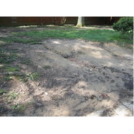
Students will observe and record the changes caused by weathering and erosion from moving water have on limestone.
- Subject:
- Physical Science
- Material Type:
- Lesson Plan
- Author:
- rgothaii@rgdeuceenterprises.com
- Date Added:
- 07/22/2021

Students will observe and record the changes caused by weathering and erosion from moving water have on limestone.

Electromagnetics Volume 1 by Steven W. Ellingson is a 225-page, peer-reviewed open educational resource intended for electrical engineering students in the third year of a bachelor of science degree program. It is intended as a primary textbook for a one-semester first course in undergraduate engineering electromagnetics. The book employs the “transmission lines first” approach in which transmission lines are introduced using a lumped-element equivalent circuit model for a differential length of transmission line, leading to one-dimensional wage equations for voltage and current.
Suggested citation: Ellingson, Steven W. (2018) Electromagnetics, Vol. 1. Blacksburg, VA: VT Publishing. https://doi.org/10.21061/electromagnetics-vol-1 CC BY-SA 4.0
Three formats of this book are available:
Print (ISBN 978-0-9979201-8-5)
PDF (ISBN 978-0-9979201-9-2)
LaTeX source files
If you are a professor reviewing, adopting, or adapting this textbook please help us understand a little more about your use by filling out this form: http://bit.ly/vtpublishing-updates
Additional Resources
Problem sets and the corresponding solution manual are also available.
Community portal for the Electromagnetics series https://www.oercommons.org/groups/electromagnetics-user-group/3455/
Faculty listserv for the Electromagnetics series https://groups.google.com/a/vt.edu/d/forum/electromagnetics-g
Submit feedback and suggestions http://bit.ly/electromagnetics-suggestion
Table of Contents:
Chapter 1: Preliminary Concepts
Chapter 2: Electric and Magnetic Fields
Chapter 3: Transmission Lines
Chapter 4: Vector Analysis
Chapter 5: Electrostatics
Chapter 6: Steady Current and Conductivity
Chapter 7: Magnetostatics
Chapter 8: Time-Varying Fields
Chapter 9: Plane Waves in Lossless Media
Appendixes
A. Constitutive Parameters of Some Common Materials
B. Mathematical Formulas
C. Physical Constants
About the Author: Steven W. Ellingson (ellingson@vt.edu) is an Associate Professor at Virginia Tech in Blacksburg, Virginia in the United States. He received PhD and MS degrees in Electrical Engineering from the Ohio State University and a BS in Electrical & Computer Engineering from Clarkson University. He was employed by the US Army, Booz-Allen & Hamilton, Raytheon, and the Ohio State University ElectroScience Laboratory before joining the faculty of Virginia Tech, where he teaches courses in electromagnetics, radio frequency systems, wireless communications, and signal processing. His research includes topics in wireless communications, radio science, and radio frequency instrumentation. Professor Ellingson serves as a consultant to industry and government and is the author of Radio Systems Engineering (Cambridge University Press, 2016).
This textbook is part of the Open Electromagnetics Project led by Steven W. Ellingson at Virginia Tech. The goal of the project is to create no-cost openly-licensed content for courses in undergraduate engineering electromagnetics. The project is motivated by two things: lowering learning material costs for students and giving faculty the freedom to adopt, modify, and improve their educational resources.
Accessibility features of this book: Screen reader friendly, navigation, and Alt-text for all images and figures.
Publication of this book was made possible in part by the Open Education Faculty Initiative Grant program at the University Libraries at Virginia Tech. http://guides.lib.vt.edu/oer/grants

Electromagnetics, volume 2 by Steven W. Ellingson is a 216-page peer-reviewed open textbook designed especially for electrical engineering students in the third year of a bachelor of science degree program. It is intended as the primary textbook for the second semester of a two-semester undergraduate engineering electromagnetics sequence. The book addresses magnetic force and the Biot-Savart law; general and lossy media; parallel plate and rectangular waveguides; parallel wire, microstrip, and coaxial transmission lines; AC current flow and skin depth; reflection and transmission at planar boundaries; fields in parallel plate, parallel wire, and microstrip transmission lines; optical fiber; and radiation and antennas.
Table of Contents:
Chapter 1: Preliminary Concepts
Chapter 2: Magnetostatics Redux
Chapter 3: Wave Propagation in General Media
Chapter 4: Current Flow in Imperfect Conductors
Chapter 5: Wave Reflection and Transmission
Chapter 6: Waveguides
Chapter 7: Transmission Lines Redux
Chapter 8: Optical Fiber
Chapter 9: Radiation
Chapter 10: Antennas
Appendix A: Constitutive Parameters of Some Common Materials
Appendix B: Mathematical Formulas
Appendix C: Physical Constants
Additional Resources
Problem sets and the corresponding solution manuals
Slides of figures used in and created for the book
LaTeX sourcefiles.
Screen-reader friendly version
Errata for Volume 2
Collaborator portal for the Electromagnetics series https://www.oercommons.org/groups/electromagnetics-user-group/3455
Faculty listserv for the Electromagnetics series
Submit feedback and suggestions
The Open Electromagnetics Project https://www.faculty.ece.vt.edu/swe/oem
Led by Steven W. Ellingson at Virginia Tech, the goal of the Open Electromagnetics Project is to create no-cost openly-licensed content for courses in engineering electromagnetics. The project is motivated by two things: lowering learning material costs for students and giving faculty the freedom to adopt, modify, and improve their educational resources.
Books in this Series
Electromagnetics, Volume 1 https://doi.org/10.21061/electromagnetics-vol-1
Electromagnetics, Volume 2 https://doi.org/10.21061/electromagnetics-vol-2
To express your interest in a book or this series, please visit http://bit.ly/vtpublishing-updates

Biology, Chemistry, Physics, Space, and Earth Science
Word Count: 74440
(Note: This resource's metadata has been created automatically as part of a bulk import process by reformatting and/or combining the information that the author initially provided. As a result, there may be errors in formatting.)

Where is humanity going? How realistic is a future of fusion and space colonies? What constraints are imposed by physics, by resource availability, and by human psychology? Are default expectations grounded in reality?
This textbook, written for a general-education audience, aims to address these questions without either the hype or the indifference typical of many books. The message throughout is that humanity faces a broad sweep of foundational problems as we inevitably transition away from fossil fuels and confront planetary limits in a host of unprecedented ways—a shift whose scale and probable rapidity offers little historical guidance.
Salvaging a decent future requires keen awareness, quantitative assessment, deliberate preventive action, and—above all—recognition that prevailing assumptions about human identity and destiny have been cruelly misshapen by the profoundly unsustainable trajectory of the last 150 years. The goal is to shake off unfounded and unexamined expectations, while elucidating the relevant physics and encouraging greater facility in quantitative reasoning.
After addressing limits to growth, population dynamics, uncooperative space environments, and the current fossil underpinnings of modern civilization, various sources of alternative energy are considered in detail— assessing how they stack up against each other, and which show the greatest potential. Following this is an exploration of systemic human impediments to effective and timely responses, capped by guidelines for individual adaptations resulting in reduced energy and material demands on the planet’s groaning capacity. Appendices provide refreshers on math and chemistry, as well as supplementary material of potential interest relating to cosmology, electric transportation, and an evolutionary perspective on humanity’s place in nature.
Corrections and feedback can be left at https://tmurphy.physics.ucsd.edu/energy-text/

This biomimetic engineering challenge introduces students to the fields of nanotechnology and biomimicry. Students explore how to modify surfaces such as wood or cotton fabric at the nanoscale. They create specialized materials with features such as waterproofing and stain resistance. The challenge starts with student teams identifying an intended user and developing scenarios for using their developed material. Students then design and create their specialized material using everyday materials. Each students test each design under specific testing constraints to determine the hydrophobicity of the material. After testing, teams iterate ways to improve their self-cleaning superhydrophobic modification technique for their design. After iterating and testing their designs, students present their final product and results to the class.

Students learn about the periodic table and how pervasive the elements are in our daily lives. After reviewing the table organization and facts about the first 20 elements, they play an element identification game. They also learn that engineers incorporate these elements into the design of new products and processes. Acting as computer and animation engineers, students creatively express their new knowledge by creating a superhero character based on of the elements they now know so well. They will then pair with another superhero and create a dynamic duo out of the two elements, which will represent a molecule.
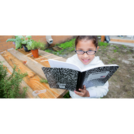
In this lesson, students will conduct experiments simulating erosion by pouring water on various surfaces in the outdoor classroom.
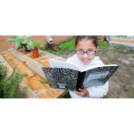
In this lesson, students will conduct experiments simulating erosion by pouring water on various surfaces in the outdoor classroom.
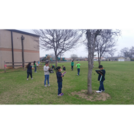
Students will read the complex text on erosion and use the outdoor space to verify or deny the content of the text in the real world setting.

Essentials of Geographic Information Systems integrates key concepts behind the technology with practical concerns and real-world applications. Recognizing that many potential GIS users are nonspecialists or may only need a few maps, this book is designed to be accessible, pragmatic, and concise. Essentials of Geographic Information Systems also illustrates how GIS is used to ask questions, inform choices, and guide policy. From the melting of the polar ice caps to privacy issues associated with mapping, this book provides a gentle, yet substantive, introduction to the use and application of digital maps, mapping, and GIS.

What happens when light from the Sun shines on the Earth?
Short Description:
This course is intended for prospective and practicing elementary and middle school teachers. By exploring physical phenomena in class, you will learn science in ways in which you are expected to teach science in schools or in informal settings such as afterschool programs, youth group meetings, and museum workshops. This course also is appropriate for general science students and others interested in exploring some of the physical phenomena underlying global climate change. Data dashboard
Word Count: 178063
(Note: This resource's metadata has been created automatically by reformatting and/or combining the information that the author initially provided as part of a bulk import process.)
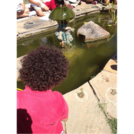
STUDENT ACTIVITY -- 4th -- TXThis is a distance-learning lesson students can complete at home.The student will explore their outdoor space for different forms of energy including mechanical, electrical, light, thermal and sound energy.This activity was created by Out Teach (out-teach.org), a nonprofit providing outdoor experiential learning to transform Science education for students in under-served communities.
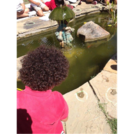
Students will explore the garden for different forms of energy including mechanical, electrical, light, thermal and sound energy.
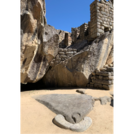
Students will use knowledge of aquatic and terrestrial environments to identify fossils and predict environmental changes over time.
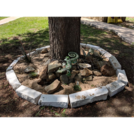
Students will explore the components of soil and make a model of sedimentary rock layers and fossil fuels.

Conocer los fundamentos teóricos de la química inorgánica es esencial para comprender los conceptos y principios esenciales de esta rama de la química, que se enfoca en el estudio de los elementos y compuestos inorgánicos; proporcionando una base teórica sólida para el estudio de otras áreas de esta ciencia. "Fundamentos Teóricos de Química Inorgánica", además de temas clave de la química inorgánica, como la teoría del enlace de valencia y la química de los elementos, también cubre temas importantes como la estructura de la materia, la teoría cuántica, la estequiometría y la clasificación de las reacciones químicas. Asimismo, se destaca la inclusión de temas relacionados con la medición de las propiedades de la materia, la descripción de los sistemas dispersos, entre otros. El objetivo de este libro es brindar una base sólida de conocimientos en química inorgánica, que permita al lector comprender los principios y fundamentos teóricos que rigen esta disciplina, con un enfoque claro y didáctico. El libro proporciona un excelente recurso tanto para estudiantes como para docentes. Razón por la que, "Fundamentos Teóricos de Química Inorgánica" es una obra esencial para aquellos que deseen profundizar en el conocimiento de la química inorgánica y comprender mejor sus conceptos fundamentales.

De transport- en overdrachtsprocessen van warmte, massa en impuls worden naar hun analogie behandeld. De processen worden beschreven met behulp van macro- en microbalansen die in veel gevallen leiden tot differentiaalvergelijkingen. Ook veel aspecten van stromingsleer komen op deze manier aan de orde en zo bereidt het boek ook voor op moderne Computational Fluid Dynamics technieken. Het doel van het boek is ook studenten te trainen in het oplossen van problemen waarbij transportverschijnselen centraal staan. Daartoe bevat het boek bijna 100 uitgewerkte vraagstukken.

Students will go on a scavenger hunt around the garden demonstrating and recording ways that different objects can move.

The overall goal of the authors with General Chemistry: Principles, Patterns, and Applications was to produce a text that introduces the students to the relevance and excitement of chemistry.Although much of first-year chemistry is taught as a service course, Bruce and Patricia feel there is no reason that the intrinsic excitement and potential of chemistry cannot be the focal point of the text and the course. So, they emphasize the positive aspects of chemistry and its relationship to studentsŐ lives, which requires bringing in applications early and often. In addition, the authors feel that many first year chemistry students have an enthusiasm for biologically and medically relevant topics, so they use an integrated approach in their text that includes explicit discussions of biological and environmental applications of chemistry.